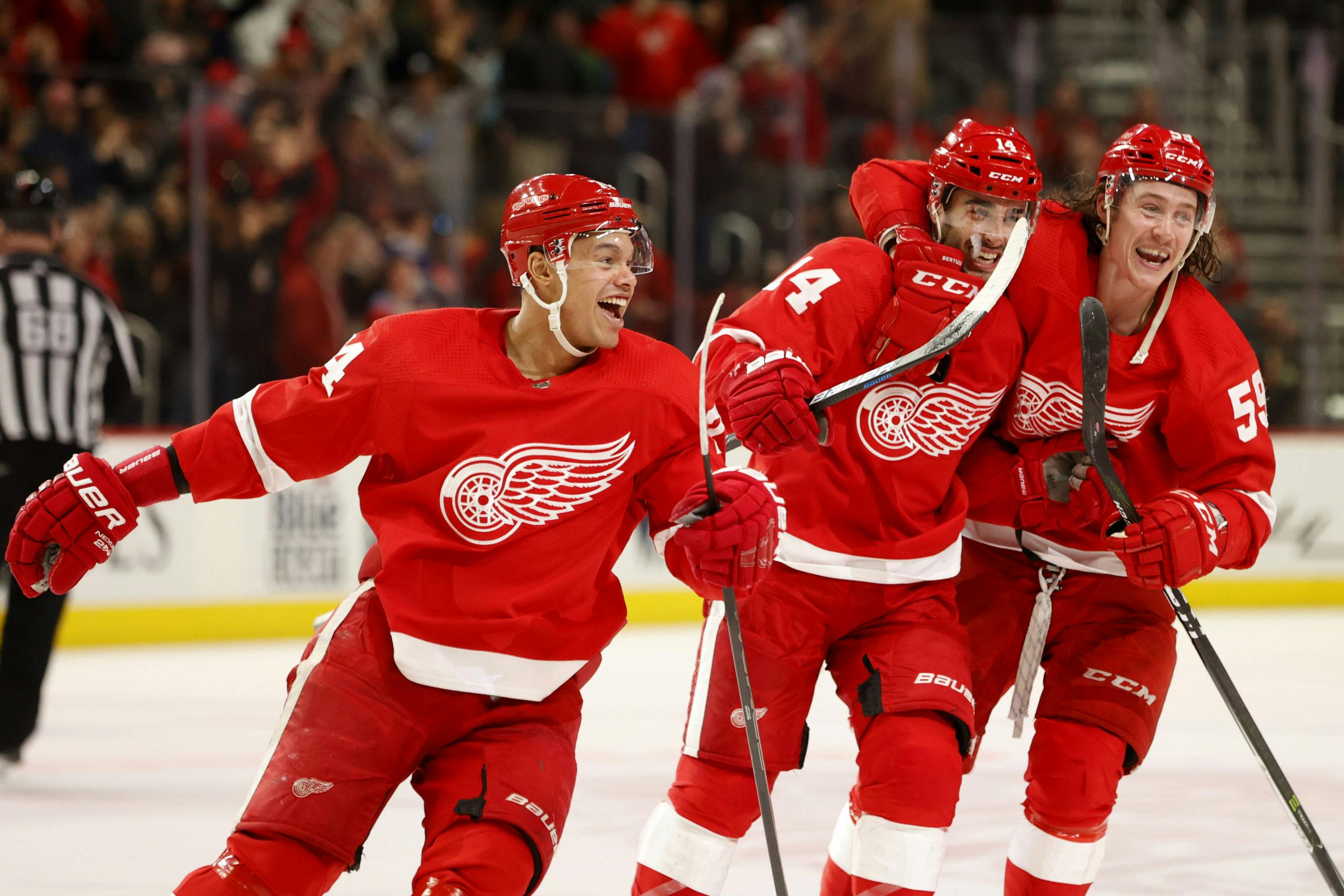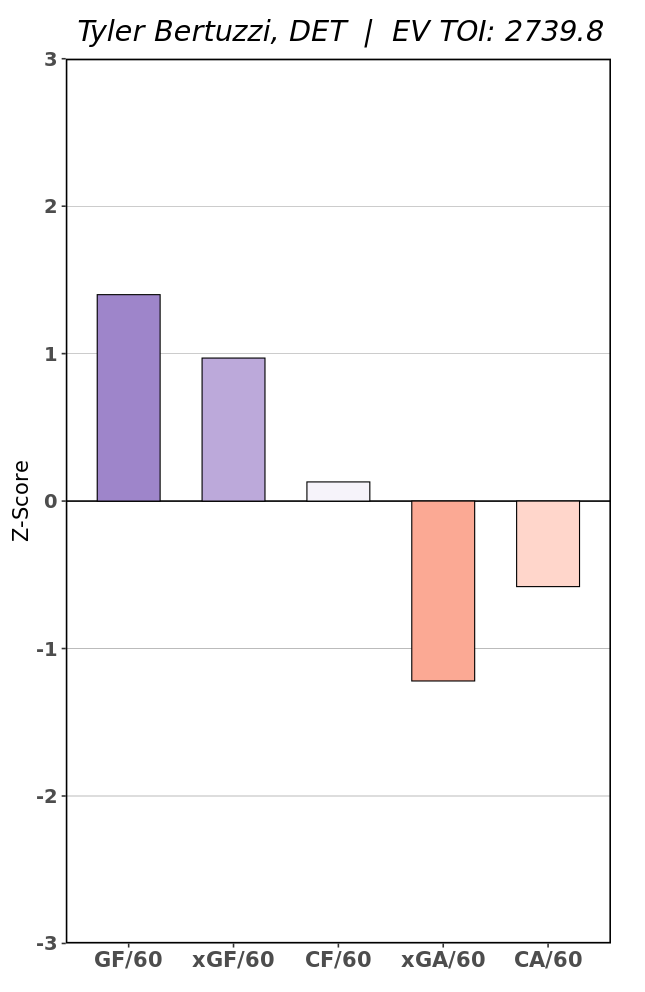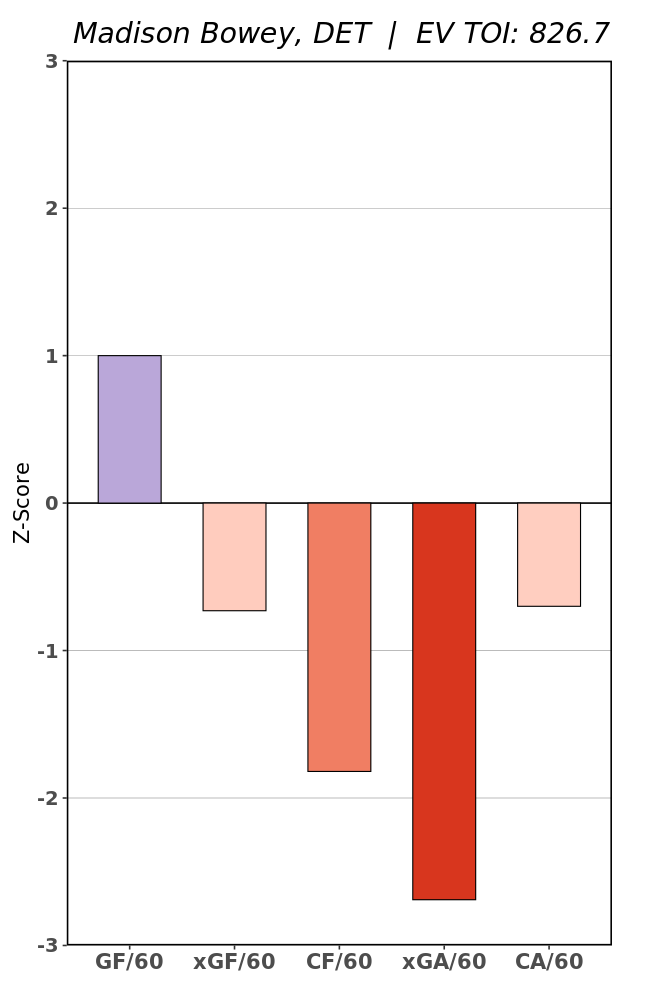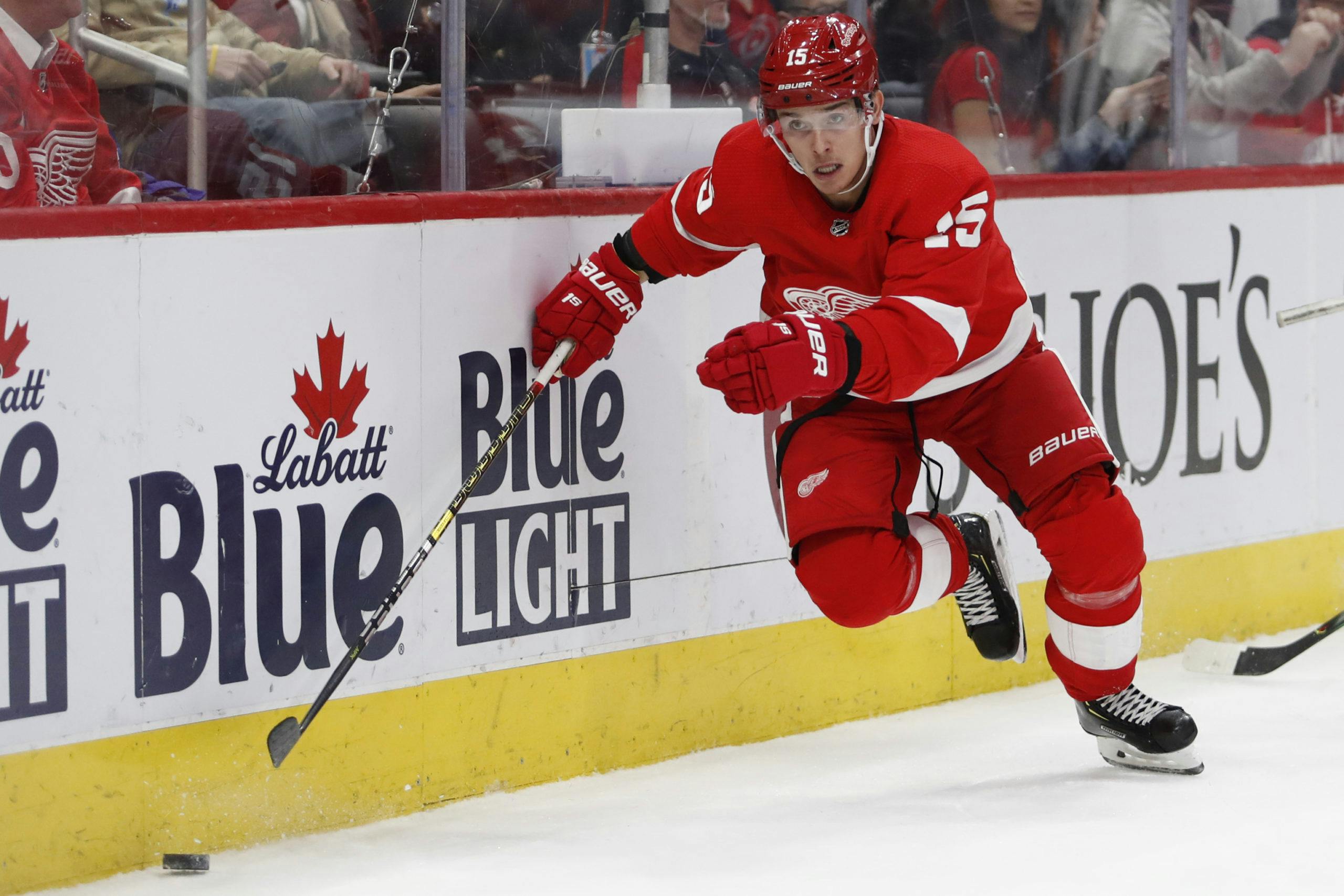Breaking down each RFA on the Red Wings and what the future may hold

By Cameron Kuom
4 years agoThe doldrums of the NHL’s unexpected hiatus has arrived and it hasn’t even been a week. Sigh. The status of the league is a developing story each passing day but not in an antsy, zealous type of way. This period of inactivity, at the very least, is the perfect time to start planning ahead. The Red Wings surely should take advantage of what will likely be a delayed opening to free agency, seeing as there are 13 pending free agents — eight RFAs, five UFAs — on the NHL roster alone.

Many external factors outside of the specific contract negotiations and who is worth what will persist. To what extent will the league’s lost revenue impact the salary cap? How does the Red Wings’ messy contract situation affect who is retained and who isn’t? There will be a lot to juggle for Steve Yzerman, but if the veteran GM has learned anything in his time as an executive, nothing is ever straightforward in this business.
One thing is certain, though: The roster needs to improve. Another historically bad year will have severe repercussions. Which means this offseason, and the looming decisions on team free agents, is vital to finding progress. What follows is a breakdown on (most of) the Red Wings’ upcoming RFAs and what the future may hold.
Anthony Mantha
Of all the free agents on the team, Mantha is the closest matter of when, not if, he’ll re-sign. There are some keys to consider, namely arbitration, which Mantha is eligible for. In a year’s time Mantha will have less than seven years of service to the league and will only be 26. Meaning, a one-year arbitration awarded contract would carry him to one last RFA year. That’s good news, but, in turn, would essentially be leaving next offseason as the eleventh hour to hammer out a long-term deal.
Hiding somewhere in the background is the prospect of an offer-sheet. The Canadiens ripped that band-aid off last year, but the offer-sheet still remains so taboo around the league that one is not likely.
Nevertheless, there is still opportunity for something to go wrong. As one of the safest bets on the team, acting quickly and with prudence should be a priority. After all, he proved to be the driving force behind the Red Wings’ dynamic top-line.
Mantha led the team in many key 5-on-5 statistics: Points-per-60 (2.81), corsi-for percentage (52.09) and expected-goals-for percentage (55.37). According to Evolving Hockey’s xGAR model, which is a model used to predict future success, Mantha owns a comfortable team lead of 6.4 expected goals above replacement. By all accounts, he was the Red Wings’ best skater when healthy.
Health is the biggest, and, frankly, the only question surrounding Mantha and inking a multi year extension. He’s missed significant time in each of his four seasons as a regular on the NHL roster. Granted, they’ve almost all spurred from fluke instances — a broken hand after scrapping with Luke Witkowski, rib injury caused by a Jake Muzzin slew foot; to name a few — which don’t necessarily qualify his body as “injury prone.” Can the Red Wings trust him to be responsible and avoid troublesome spots? They might have to.
The contract itself will most likely make Mantha the Red Wings highest paid player. Dylan Larkin might have the captaincy bid locked up, but his team-high $6.1 million cap hit comes in too low for it to be the standard internally. Evolving Hockey projects Mantha to come in the range of a $6.7 million cap hit over four years. That would of course take Mantha to unrestricted free agency at age 29. Ideally a five or six year deal can be reached, that way the team side can pick up more value before having to make a decision on a second extension.
Tyler Bertuzzi
The second member of the ‘MLB’ line set for a substantial pay day, Bertuzzi’s emergence as a top-6 forward over the last two years has done dividends for the Red Wings’ rebuild. The hole left by the departure of Gustav Nyquist has largely been filled by the 25-year-old, who is now carving out his own role as a quality sandpaper winger. “Integral” might be taking it a step too far, but no doubt Bertuzzi has become a valued piece to the puzzle.
Which is why extending him is a no-brainer. Actual specifics do matter slightly more than in Mantha’s case, but it’s hard to imagine a situation where Bertuzzi becomes “overpaid.” Many of the same caveats discussed about Mantha’s negotiations apply here. Bertuzzi is arbitration eligible and has RFA status for this year and next. The threat of an offer-sheet seems even more unlikely here.
Looking over his track record, there is reason to believe Bertuzzi has overachieved in his two full NHL seasons. He’s shooting at roughly 16 percent, which is quite high and usually not sustainable. That’s largely why he now has back-to-back 21-goal seasons in his pocket. However, Bertuzzi’s career shooting percentage of 14.2 might suggest otherwise. Well, at least his camp might argue so. Really, his sample size is too small to draw any definite conclusions from. That will create disagreement and, ultimately, hold up contract talks.

The above graph from Evolving Hockey displays Bertuzzi’s regularized adjusted plus-minus over the span of 2017-2020 at even strength. In that time he’s mostly been an above average offensive player. His defensive impact needs work though. I do wonder how much of Bertuzzi’s defensive play is masked by Dylan Larkin. Between 2018-19 to 2019-20, Bertuzzi has played about ~58 percent of his even strength minutes with Larkin.
It would not be shocking if regression is in Bertuzzi’s future. Nevertheless, there is no good reason why he should be penalized for working well with good players. Evolving Hockey projects a four year contract at a $5.4 million cap hit, which sounds about right. Not bad for a home grown talent.
Robby Fabbri
Steve Yzerman’s biggest success story to date, Fabbri has come in and found his old rookie scoring touch. The Stanley Cup Champion with St. Louis has not only contributed goals to a starved offense, but is quickly becoming a fan favorite. No surprise there, Fabbri has left his finger prints on several feel good moments in a season lacking them. From his 2-goal debut performance to ending a four year winless streak against Tampa Bay with a shootout winner, his mark has been felt and the fans have endeared him for it.
An added bonus to it all: Jeff Blashill started experimenting with Fabbri at center in the final few games. If Fabbri can make the transition to the middle of the ice, effectively pushing Valtteri Filppula down the lineup, that would be massive. The Red Wings desperately need a second line center and Fabbri would make for a nice stop-gap.
Once again, this is a no-brainer: Extend Fabbri. His underlying numbers are not pretty, nor was his struggles in St. Louis reassuring. Alas, his scoring rate (when healthy) has remained very consistent. His 13.6 shooting percentage in 2019-20 remains inline with his career average of 12.8 percent. Combine that with his quality power play performance and an annual high teens, low-20s goal scorer is fairly reasonable.
Considering that last notion, where should the term on Fabbri’s deal land? Because he’s only had one year in the Detroit system, a bridge deal feels inevitable. His history with knee injuries will also factor in substantially. Evolving Hockey projects a two year deal with a $2.5 million cap hit. Two years would take Fabbri to a final RFA year at age 26. By that point there should be enough information and sample size to decide on going long-term or not.
Madison Bowey
This is where things start to lose clarity. The likes of Mantha, Bertuzzi and Fabbri have all proven their worth enough to be re-signed. The defensive corps, however, is a different story. Not only is the position availability cut in half compared to forwards, but who is good and who is bad is considerably more difficult to measure. In the case of Madison Bowey, since being acquired at the 2019 trade deadline, has performed closer to the latter than he has the former.
The 24-year-old at one point cleared waivers and was assigned to Grand Rapids, which may or may not be an indication of how the rest of the league perceives him. With traditional numbers, Bowey doesn’t appear all that bad: Three goals and 17 points in 53 games. That was good enough for second in team scoring among defenseman, albeit, on a team lacking in talent on the back-end.
Take a glance at Bowey’s underlying numbers and it isn’t just bad, it’s ugly. The Athletic’s Dom Luszczyszyn, who has created his own one-tell-all stat, game score value added, has Bowey pegged as the ninth worst defender in the NHL with a -0.66 GSVA (Trevor Daley and Jonathan Ericsson are also in the bottom-10). Bowey’s RAPM chart from Evolving Hockey is also quite depressing:

While Bowey was a worthwhile experiment, the hypothesis was most certainly wrong. So the question shifts from “should they go long-term?” to “should they go short-term?” and, honestly, I’m leaning against it. It more so comes down to other defensive personnel in the organization. Filip Hronek, Patrik Nemeth and Alex Biega are the only safe bets to play on the NHL roster next season, with Danny DeKeyser still an unknown following season-ending back surgery in December. After that, it’s a collection of ifs and maybes: Dennis Cholowski, Gustav Lindstrom and Moritz Seider being the most notable names.
With that said, Yzerman has almost no choice to tap into the free agency market for a defenseman. Bowey could fill the hole as a body, but that won’t do much in hopes of improving off a 17-win season. Changes need to happen and moving on from Bowey seems like an easy place to start.
The reclamation projects
The acquisitions made in Yzerman’s first year as GM were not glamorous ones by any stretch of the imagination. Fabbri was the most high-profile and that leap of faith worked out. But Fabbri was not the only reclamation project brought on board this season. Adam Erne in August, Brendan Perlini in October and Dmytro Timashov in February were all added with hopes of discovering some untapped potential.
The results? Not great.
Erne struggled for most of the season, recording a mere five points in 56 games. It appeared as though Erne found his stride after the trade deadline, but an unfortunate hand injury ended his season early. In that short, but promising post-deadline run, the vision for Erne was being realized. He brought a unique blend of physicality and skating ability, a package that is highly coveted in the NHL today. As a hard-skill player, the potential is certainly still there.
Perlini, on the other hand, plays a much different style than Erne. He plays a more finesse game with a very noticeable offensive touch. Unlike Erne, despite being a big man, Perlini does not have a heavy stride like most power forwards. Instead, he plays with the quickness of a sub-six-foot player, but still has the advantage of a long reach. In theory, Perlini’s offensive talent should have flourished in a system granting him more opportunity. After all, he did score 14 goals in 2018-19. What Detroit got instead was four points in 39 games and a player who spent most of his time in the press box.

Mar 10, 2020; Detroit, Michigan, USA; Detroit Red Wings left wing Dmytro Timashov (15) skates to the puck against the Carolina Hurricanes during the second period at Little Caesars Arena. (Raj Mehta-USA TODAY Sports)
Then there is Timashov, who suited up in only five games for Detroit, not once cracking 14 minutes in a single contest. Yet, the Swedish winger might have made more noticeable plays in his brief stint than Erne and Perlini did combined. Timashov’s ability to extend plays, especially through the neutral zone, was a refreshing sight to see. Despite being on the smaller size, at 5-foot-10, 192 pounds, he’s surprisingly strong on the puck.
With that in mind, who should be brought back? With the way the roster is currently assembled, it’s hard to see a world where all three return. As of now, the forward depth chart most likely shakes out as:
Bertuzzi-Larkin-Mantha
Fabbri-Filppula-Zadina
Helm-Nielsen-Glendening
Abdelkader-???-???
Theoretically, two spots are up for grabs. The possibility of a buyout/trade/free agent signing will affect the availability of spots, so keep that in mind. Not to mention one (or both) of Joe Veleno and Michael Rasmussen could be ready, as well as a 2020 draft pick. In other words, spots are scarce. Of the three between Erne, Perlini and Timashov, the odd man out seems to be Perlini. The fit has worked out the least and the coaching staff even favored the other two over him.
The others
Capping it off, five other RFAs exist in the organization. Christoffer Ehn in Detroit, and Evgeny Svechnikov, Taro Hirose, Dom Turgeon and Kyle Wood in Grand Rapids. The latter two, should they return, will be with the Griffins. The former three, however, have all spent time in Detroit with mixed results. Ultimately, they are on the outside looking in.
Starting with Ehn, who has been with the Red Wings for the entire season, has not performed well. Unfortunately, the team vaulted him onto the NHL roster too soon and that may have been at the expense of his development. As a fine, pinch center, the front office should re-sign him but with plans to keep him in Grand Rapids. It’s clear that time in the AHL is what’s best for his development.
Svechnikov becomes an intriguing point of discussion. The former first round pick is no longer waiver exempt, meaning it’s either the NHL or he’ll have to be placed on waivers. There’s a semi-good chance another team would put in a claim just because of Svechnikov’s first round pedigree. If it comes to that, Red Wings management should still take the chance, as letting him loose now guarantees no returning assets as well. Taro Hirose is in a similar position, finding success in the AHL but not at the next level. The plan should be to extend both and let them fight it out in training camp for one of the final roster spots.
Statistics, salary projections and charts via Evolving Hockey, Natural Stat Trick and NHL.com unless noted otherwise
Recent articles from Cameron Kuom





